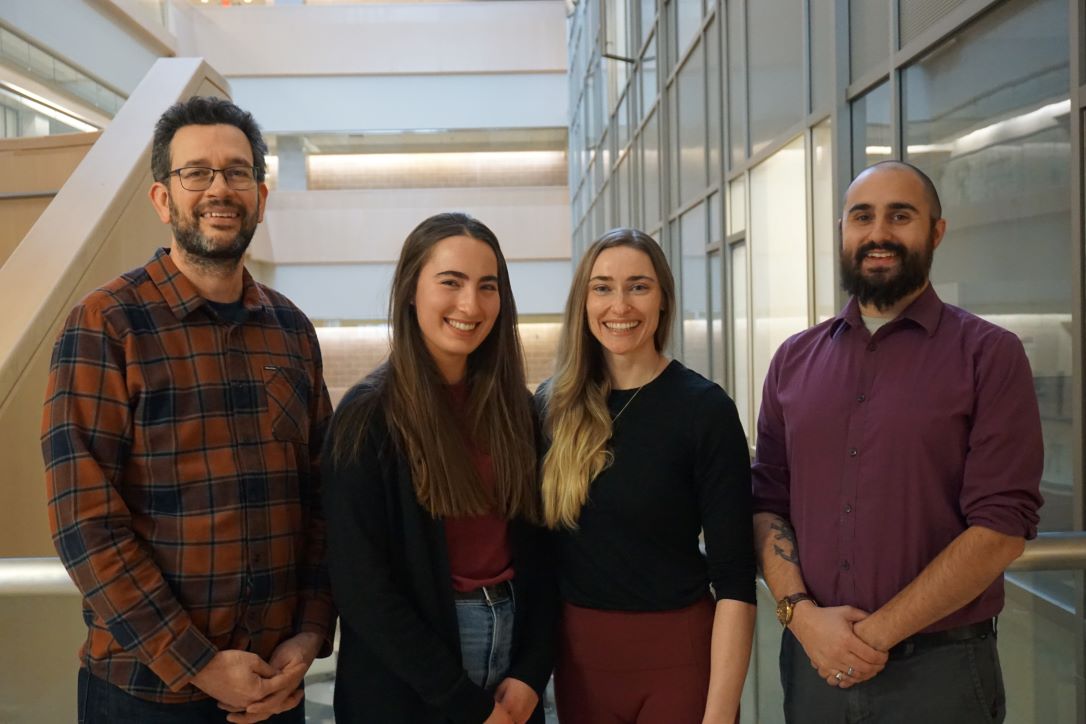
Joint efforts by USask research team simulate Canada’s cannabis consumption
SASKATOON – University of Saskatchewan (USask) researchers are developing models to more accurately determine the effects of cannabis on consumers.
The legalization of cannabis in Canada is driving the demand for scientifically backed insights to inform public health messaging. Until recently, pre-clinical cannabis research – done without the use of human participants to determine preliminary information such as substance safety and toxicity – has largely involved the injection of cannabinoids in rodent models. To develop a pre-clinical rodent model that more accurately reflects Canadian cannabis use, USask researchers Drs. John Howland (PhD) and Robert Laprairie (PhD), and their graduate students Tallan Black and Ilne Barnard have conducted studies that utilize a novel cannabis smoke delivery system by burning commercially available strains.
“You can buy the strains we used in stores as a consumer in Canada,” said Howland, professor in the College of Medicine’s Department of Anatomy, Physiology and Pharmacology. “Scientists in Canada are now able to easily use these products in research.”
The smoke chambers used in their research are the first of their kind in Canada to be adapted to burn cannabis buds, replacing the conventional use of injected cannabinoids. This generates physiological and pharmacological data that provides a more accurate window into the human experience. Using smoke inhalation – the administration method most common among Canadian high-THC cannabis users – and cannabis products available at local dispensaries, the findings draw closer parallels to the physiological and molecular functions of human use and inform important next steps in the team’s work.
“Pre-clinical models give us insight,” said Barnard, a PhD student in the Department of Anatomy, Physiology and Pharmacology. “Having a pre-clinical model to understand what’s going on in the brain [following cannabis use] can really enlighten the clinical research as well.”
Approaching the subject from the perspectives of both basic science and public health, this research takes an interdisciplinary approach to a pressing public health discussion regarding the safe consumption of cannabis. The team’s projects are funded by the Canadian Institutes of Health Research (CIHR), Natural Sciences and Engineering Research Council of Canada (NSERC), Saskatchewan Health Research Foundation (SHRF), Brain Canada, and the USask College of Medicine.
Using the team’s smoke exposure method, Barnard modelled and evaluated the impact of acute high-THC cannabis exposure on the working memory function of young adults. The findings were published in ENeuro in late 2023.
“We were able to look at a more nuanced behavioural effect following cannabis exposure,” she said. “What we saw was that following acute cannabis exposure, there is an increased deficit in working memory when the task is harder.”
Working memory plays an important role in daily functioning and human disorders such as schizophrenia, and will be further evaluated in the coming research of the team.
Black, a PhD student in USask’s College of Pharmacy and Nutrition, and the College of Medicine, modelled the impact of repeated cannabis exposure in pregnant rodents, comparing the effects of exposure via smoke versus injection, and between high-CBD and high-THC strains.
“This smoke exposure model in utero is the first of its kind,” she said. “That’s key, because the understanding of what cannabis smoke exposure is doing in utero is so new … we just don’t have the information.”
Recently published in Scientific Reports, Black’s findings confirm notable physiological differences following smoke exposure, compared to the use of injected cannabinoids. Accordingly, these findings validate the importance of using smoke in future research regarding the impacts of cannabis use during pregnancy.
As this research continues to unfold, Black warns that “in a country where cannabis is legalized, it’s really important to take everything slow and realize that we just don’t know [the full impacts of cannabis exposure].”
After validating the smoke-exposure model and identifying preliminary cautionary findings, the team has its sights set on continuing to build an understanding of the functions and risks of Canadian cannabis use. This includes investigating which behaviours are most sensitive to disruption following cannabis exposures, what behavioural outcomes to watch for in the children of a mother who used cannabis during pregnancy, and how different experiences (positive or negative) following a cannabis exposure can impact outcomes.
Ultimately, the team aims to enhance and refine public health messaging to the benefit of Canadian cannabis users.
“We believe that further education of the general public regarding cannabis will allow individuals to make informed decisions about their use, and the type of cannabis they may use,” Howland said. “These studies may also lead to the development of evidence-based interventions to alleviate the negative effects of cannabis use.”
Research was done with approval by the University of Saskatchewan Animal Care Committee and in accordance with all national and University guidelines and standards.
-30-
For media inquiries, please contact:
Daniel Hallen
USask Media Relations
daniel.hallen@usask.ca
306-966-6922
Article re-posted on .
View original article.

